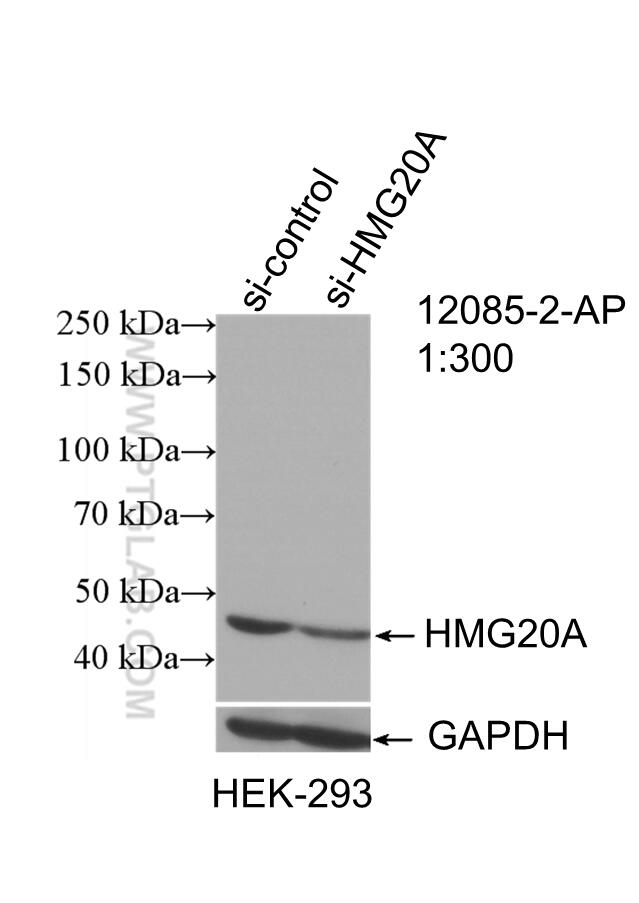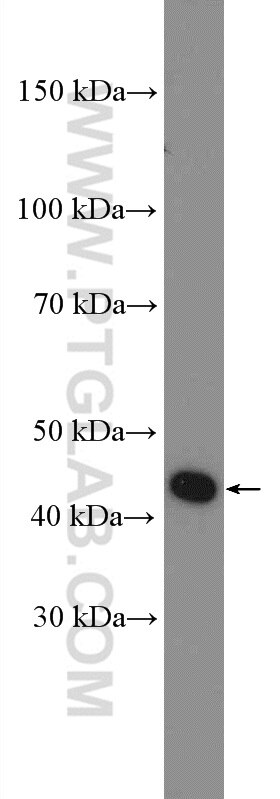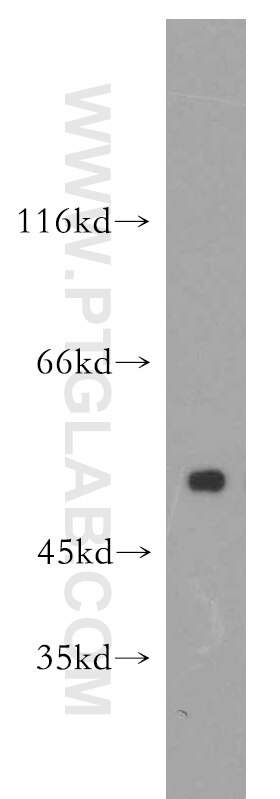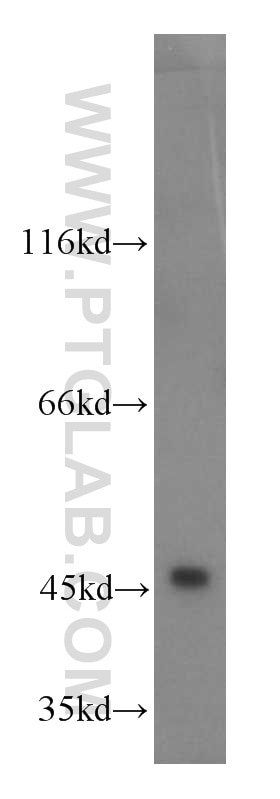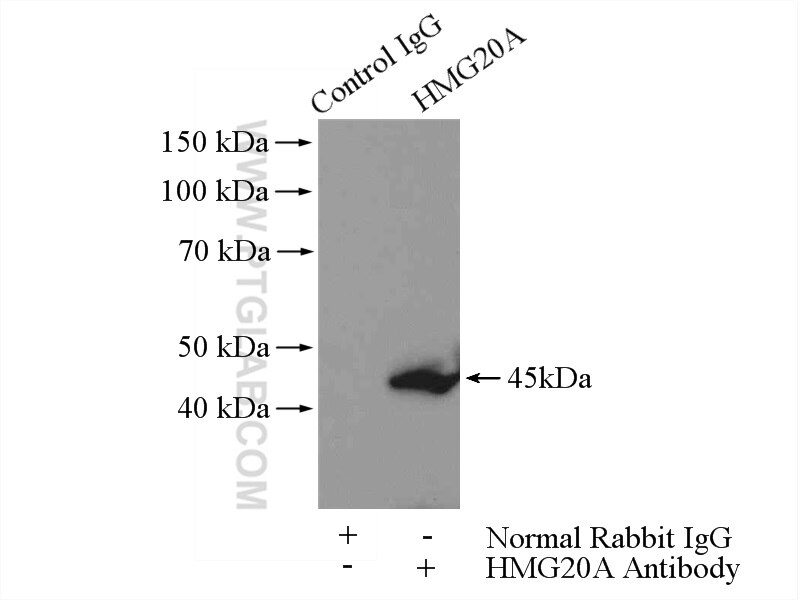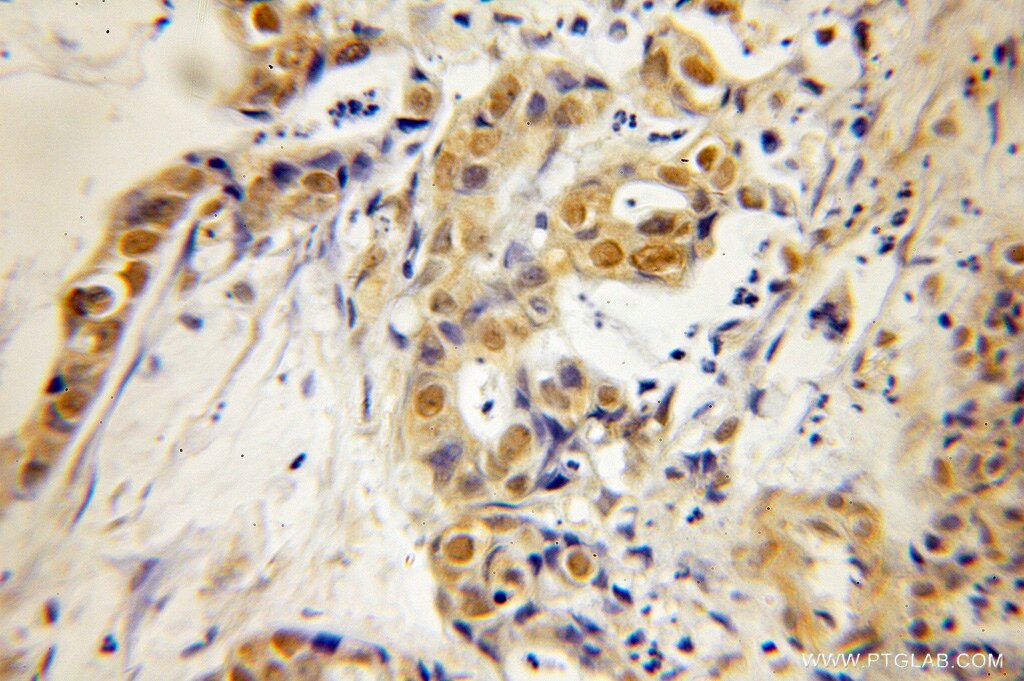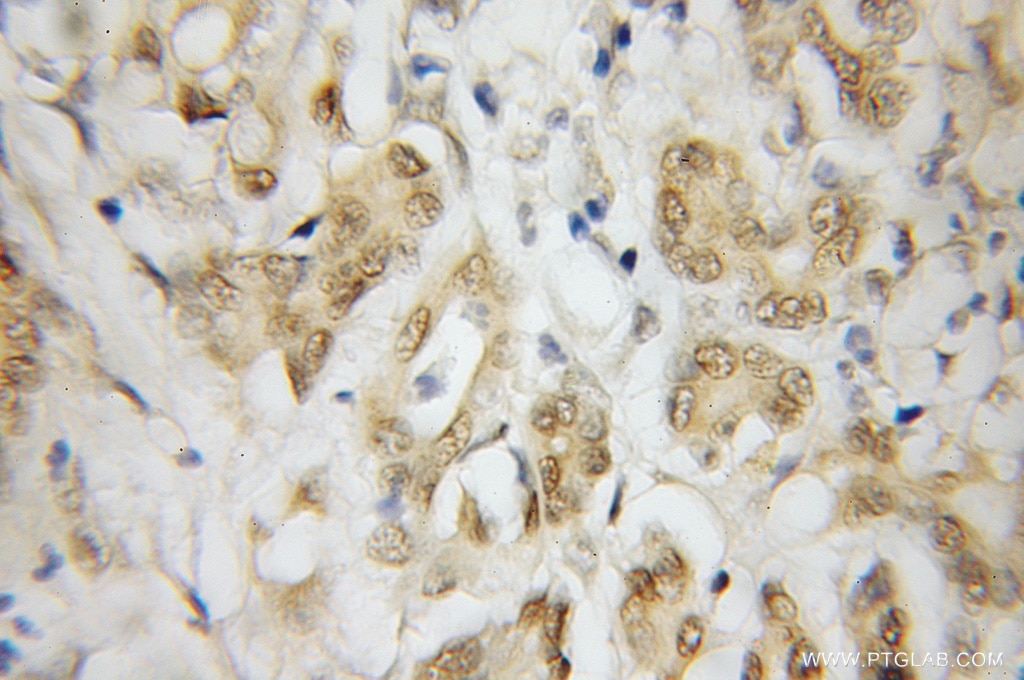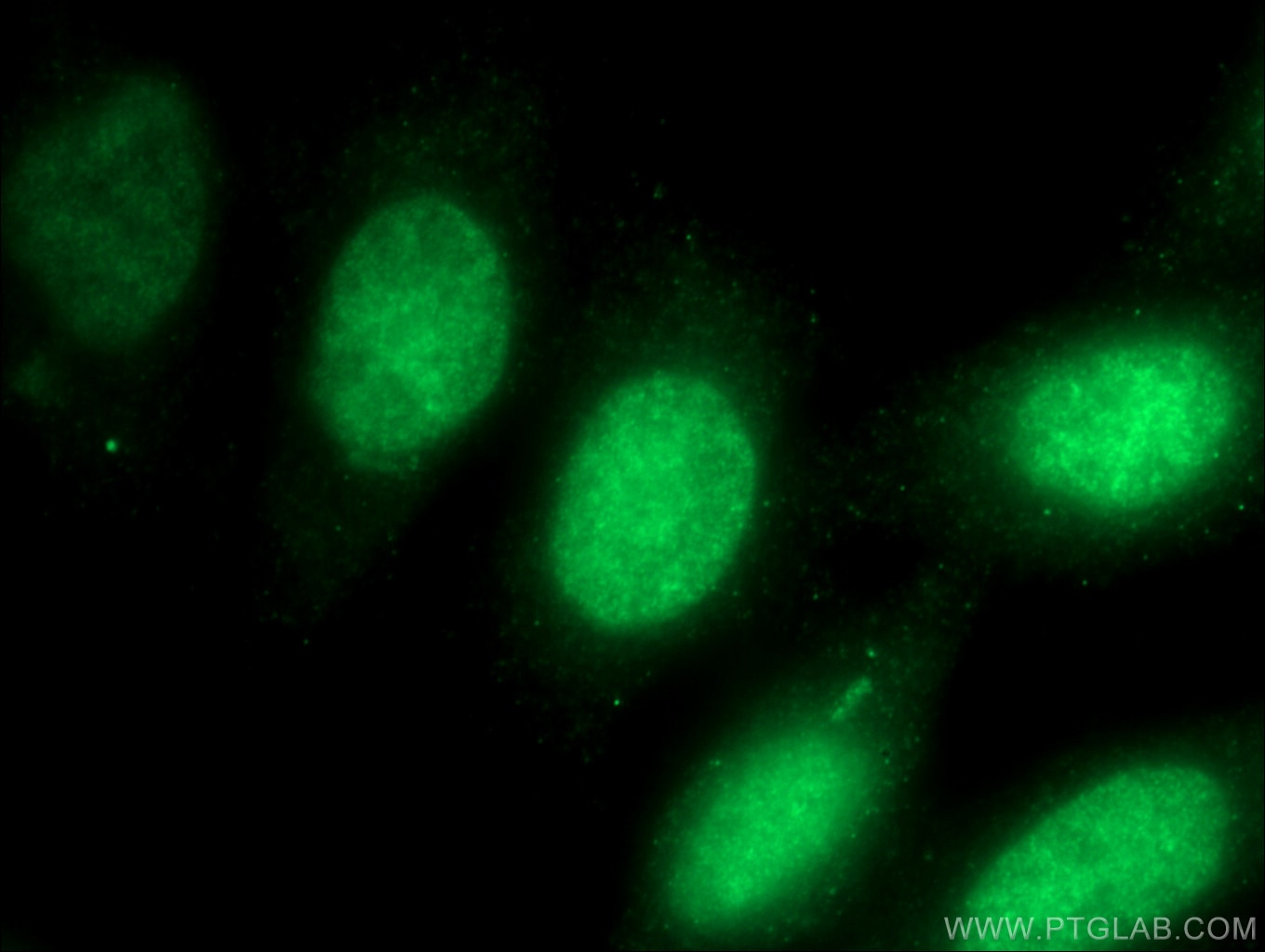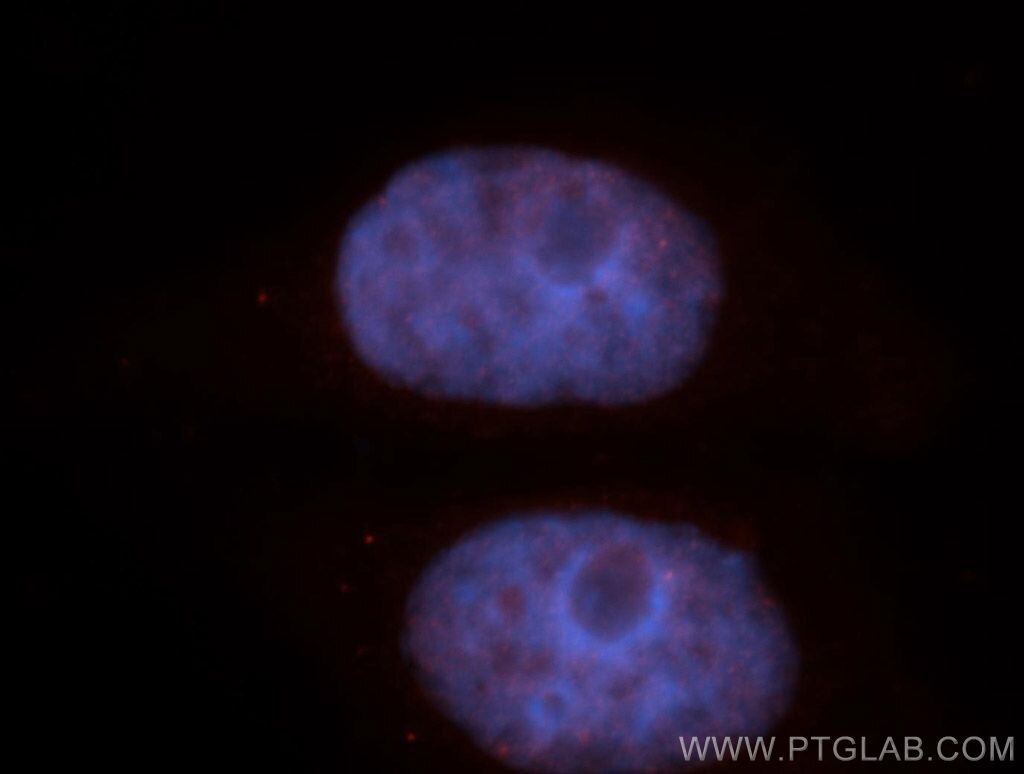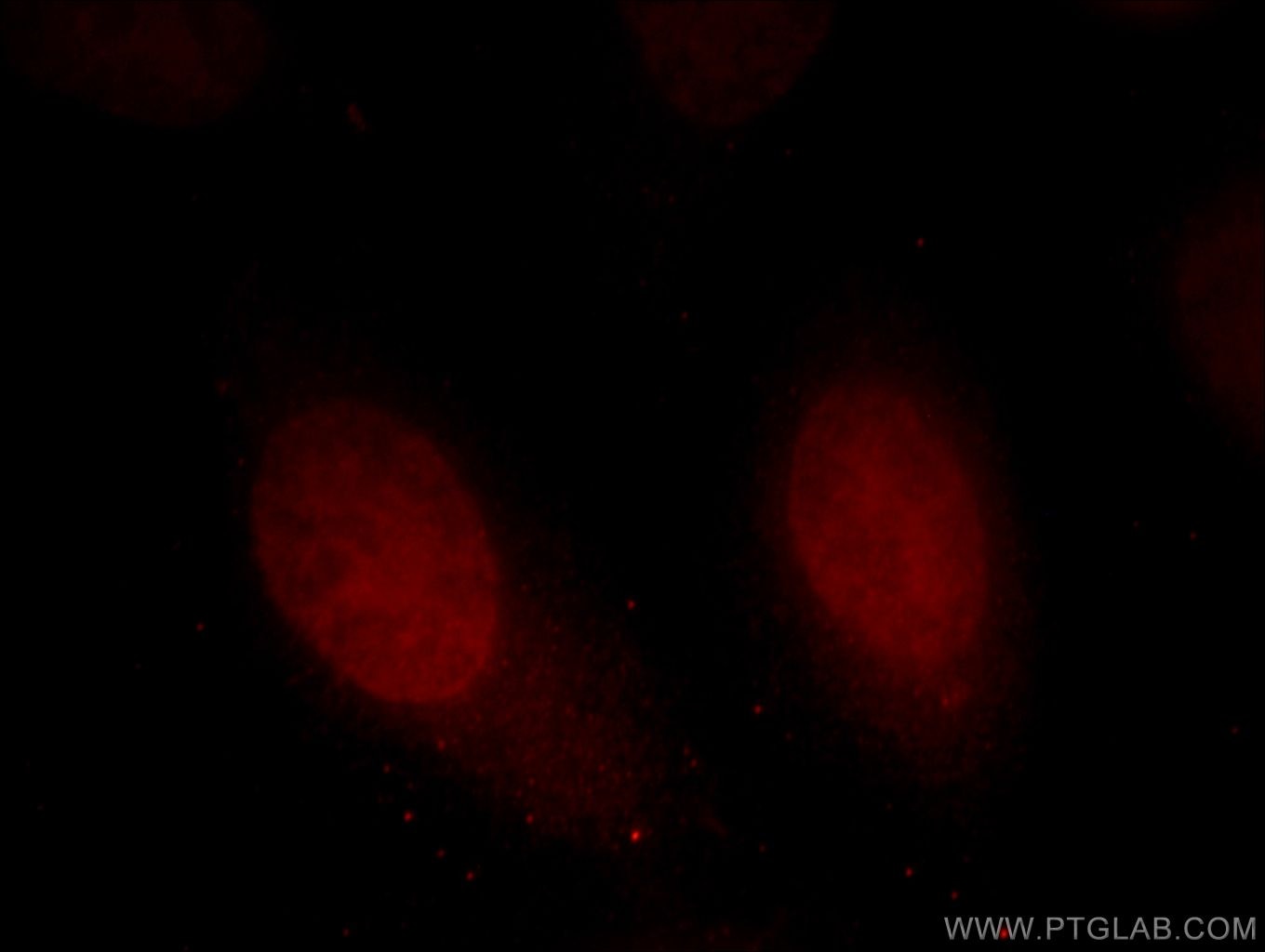- Phare
- Validé par KD/KO
Anticorps Polyclonal de lapin anti-HMG20A
HMG20A Polyclonal Antibody for WB, IHC, IF/ICC, IP, ELISA
Hôte / Isotype
Lapin / IgG
Réactivité testée
Humain, rat, souris
Applications
WB, IHC, IF/ICC, IP, CoIP, ELISA
Conjugaison
Non conjugué
N° de cat : 12085-2-AP
Synonymes
Galerie de données de validation
Applications testées
| Résultats positifs en WB | cellules Jurkat, cellules HEK-293 |
| Résultats positifs en IP | cellules Jurkat |
| Résultats positifs en IHC | tissu de cancer du pancréas humain il est suggéré de démasquer l'antigène avec un tampon de TE buffer pH 9.0; (*) À défaut, 'le démasquage de l'antigène peut être 'effectué avec un tampon citrate pH 6,0. |
| Résultats positifs en IF/ICC | cellules HepG2 |
Dilution recommandée
| Application | Dilution |
|---|---|
| Western Blot (WB) | WB : 1:500-1:2000 |
| Immunoprécipitation (IP) | IP : 0.5-4.0 ug for 1.0-3.0 mg of total protein lysate |
| Immunohistochimie (IHC) | IHC : 1:20-1:200 |
| Immunofluorescence (IF)/ICC | IF/ICC : 1:50-1:500 |
| It is recommended that this reagent should be titrated in each testing system to obtain optimal results. | |
| Sample-dependent, check data in validation data gallery | |
Applications publiées
| KD/KO | See 3 publications below |
| WB | See 10 publications below |
| IHC | See 2 publications below |
| IF | See 3 publications below |
| IP | See 2 publications below |
| CoIP | See 1 publications below |
Informations sur le produit
12085-2-AP cible HMG20A dans les applications de WB, IHC, IF/ICC, IP, CoIP, ELISA et montre une réactivité avec des échantillons Humain, rat, souris
| Réactivité | Humain, rat, souris |
| Réactivité citée | Humain, souris |
| Hôte / Isotype | Lapin / IgG |
| Clonalité | Polyclonal |
| Type | Anticorps |
| Immunogène | HMG20A Protéine recombinante Ag2718 |
| Nom complet | high-mobility group 20A |
| Masse moléculaire calculée | 347 aa, 40 kDa |
| Poids moléculaire observé | 45-50 kDa |
| Numéro d’acquisition GenBank | BC021959 |
| Symbole du gène | HMG20A |
| Identification du gène (NCBI) | 10363 |
| Conjugaison | Non conjugué |
| Forme | Liquide |
| Méthode de purification | Purification par affinité contre l'antigène |
| Tampon de stockage | PBS with 0.02% sodium azide and 50% glycerol |
| Conditions de stockage | Stocker à -20°C. Stable pendant un an après l'expédition. L'aliquotage n'est pas nécessaire pour le stockage à -20oC Les 20ul contiennent 0,1% de BSA. |
Informations générales
The HMG (high mobility group) proteins are nonhistone chromosomal proteins that is present in almost all eukaryotic cells, and it functions to stabilize nucleosome formation and acts as a transcription-factor-like protein that regulates the expression of several genes. HMG20A has a role in the initiation of neuronal differentiation by activating REST-responsive genes, and it also nvolves in the recruitment of the histone methyltransferase MLL and consequent increased methylation of histone H3 lysine 4. HMG20A (for inhibitor of BRAF35) overcomes the repressive effects of the neuronal silencer REST and activates REST-responsive genes through the modulation of histone methylation
Protocole
| Product Specific Protocols | |
|---|---|
| WB protocol for HMG20A antibody 12085-2-AP | Download protocol |
| IHC protocol for HMG20A antibody 12085-2-AP | Download protocol |
| IF protocol for HMG20A antibody 12085-2-AP | Download protocol |
| IP protocol for HMG20A antibody 12085-2-AP | Download protocol |
| Standard Protocols | |
|---|---|
| Click here to view our Standard Protocols |
Publications
| Species | Application | Title |
|---|---|---|
Nat Commun The H2A.Z and NuRD associated protein HMG20A controls early head and heart developmental transcription programs
| ||
Nat Commun KMT2A associates with PHF5A-PHF14-HMG20A-RAI1 subcomplex in pancreatic cancer stem cells and epigenetically regulates their characteristics | ||
EMBO Mol Med LSD1 inhibition induces differentiation and cell death in Merkel cell carcinoma. | ||
Cancer Cell Int Circular RNA ABCB10 promotes hepatocellular carcinoma progression by increasing HMG20A expression by sponging miR-670-3p. | ||
Biochim Biophys Acta Interactome of the inhibitory isoform of the nuclear transporter Importin 13. | ||
Biochim Biophys Acta The BRCA1-binding protein BRAP2 can act as a cytoplasmic retention factor for nuclear and nuclear envelope-localizing testicular proteins. |
